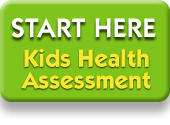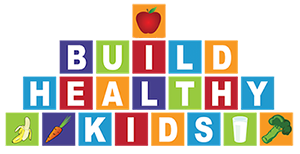| |

 The
Basics Made Simple The
Basics Made Simple
Daily
Nutrition Guide
Getting
Started, An Assessment
Perfect
Serving Sizes
Choosing
Healthy Food
Tips
for Good Eating
|
|
The Basics
Made Simple

Our Approach
and Goals:
Healthy eating may seem like an impossible task. Every day
it seems that there are conflicting messages as to what is
healthy. I can promise you that it doesn’t take a rocket
scientist to plan a healthful menu for you and your family.

Learning “what” to eat will be simple; the hard
part will be following the suggestions. The reason for this
isn’t because the food recommended is hard to find,
expensive or unpalatable. In fact, the food is very tasty,
fresh, easy to prepare and if you bargain shop, it will cost
close to the amount spent on the typical American diet.
The reason it may be difficult is because our environment
is set up to encourage unhealthy eating; junk food is available
almost everywhere, including in some schools. Healthy options
are not as readily available as fast fried food, and some
families have limited access to fresh fruits and vegetables.

The best eating plan that you and your family can follow is
one made up of mostly whole foods. We were created to eat
this way and in fact have been eating this way for most of
our time on this planet. It was only with the development
of industrialized agriculture that we shifted away from eating
what we grew on the farm or picked in the forest to a diet
made up of food in boxes, cans and jars.
With the convenience that this brought came a host of ill
effects like weight gain, heart disease and Type 2 diabetes.
Most Americans eat a diet high in processed foods and the
thought of completely changing one’s eating habits may
seem too scary at first. Because of this, it is best to focus
on just one small change until it has become easy and then
take on one more change.
 We
have created a step-by-step guide to help you make improvements
that won’t cause too much of a disruption to you or
your family. It is called Take
12. If you make one change each month,
within a year you and your family will be eating a diet full
of the essential nutrients that you need to stay healthy and
strong. We
have created a step-by-step guide to help you make improvements
that won’t cause too much of a disruption to you or
your family. It is called Take
12. If you make one change each month,
within a year you and your family will be eating a diet full
of the essential nutrients that you need to stay healthy and
strong.
You will be more successful if you make this a family project
involving everyone. It is important to remember that you are
teaching your children lessons for life - a healthy life.

 |
Dr.
Deb's Bottom Line
|
 |
General Nutrition 101
Our bodies were designed to require food and drink to stay
alive. Providing the body with the essential nutrients and
water it needs is what the study of nutrition is all about.
Our bodies need nutrients that are provided in macro-amounts;
protein, carbohydrates, fats and water, as well as essential
nutrients in micro-amounts; vitamins, minerals and special
plant nutrients.
Macronutrients:
Carbohydrates
Carbohydrates provide the major source of energy that we need
to live, grow and thrive. Every part of our body uses it for
energy; without it, we couldn’t survive. Carbohydrates
should provide 50-60% of the energy a child needs from food.
There are two kinds of carbohydrates; simple and complex.
Simple carbohydrates are single sugar molecules and they are
found in milk, fruit and refined sugar.
It is best to get simple carbohydrates from milk and fruit
because with these foods you also get fiber and a host of
other great nutrients. With refined sugar, which you find
in candy, white table sugar and other junk foods, there is
not much else present but the sugar, which is not healthy.
Complex carbohydrates are also called starches and they are
found in grain products, such as bread, crackers, pasta, and
rice. As with simple carbohydrates, there are healthy options
and not so healthy options.

Grain products can exist in their whole
form, which is the best, as nutrients are not stripped off
of them as they are in processing to make white flour products.
During the processing the whole grain is stripped of its bran
and germ layers, which contains fiber, many B vitamins and
iron. Examples of whole grains are whole oats, whole wheat,
and brown rice.
Choosing the whole grain options for the foods listed above
will help your child feel fuller longer and the slower absorption
caused by the fiber will help to prevent too much sugar from
entering the body too quickly.
A high level of blood sugar is not healthy for the body and
can lead to diabetes if it occurs often over a long period
of time.
Fiber
Fiber is the part of the plant that your body
does not absorb; therefore, it contains no calories. Its role
is to clean out the intestines so that toxins and left- over
food particles do not stay too long in the intestine, where
they can cause damage.
Diets high in fiber have been shown to decrease the risk of
heart disease and constipation and are also helpful in regulating
blood sugar levels and a healthful body weight. Good sources
of fiber include legumes, whole grains, vegetables and fruit.

The recommended amount each day is based on the amount of
calories consumed; 14 grams of fiber for every 1000 calories.
For a child eating 1600 calories a day, they should take in
at least 22 grams of fiber.
|
AGE (years)
|
FIBER REQUIREMENT
|
| 1-3 |
19 grams |
| 4-8 |
25 grams |
| 9-13 Male |
31 grams |
| 9-13 Female |
26 grams |
| 14-18 Male |
38 grams |
| 14-18 Female |
29 grams |
Protein
Proteins provide our body with the building
blocks it needs to grow. They also maintain and replace body
tissue, such as muscles, bones, blood, and body organs.
These building blocks are called amino acids. Some we can
make and others can only be provided through diet. These are
called the essential amino acids and 12 of them are required
from the diet for growing infants and children; fewer are
required for adults.
Foods that provide all the essential amino acids are called
complete proteins; milk and meat are two examples.
Ten to fifteen percent of the diet should be made up of protein.
To figure out how many grams of protein that equals, take
your child’s weight in pounds and divide it by 2 (an
80 lb child would need 40 grams of protein a day) or click
here link to general requirements table.
The best sources of protein are poultry, fish, eggs, low fat
dairy products (if over the age of two), nuts, seeds, and
legumes like black beans and lentils. It is important to note
that protein deficiency is uncommon in American children as
most get the recommended amount of protein they need every
day.
The exception to this is girls between the ages of 9 and 13,
who may not get enough protein.

Fats
Fat is an important part of a healthy diet.
Children need it to grow up healthy, and strong. Fats are
an integral part of every cell, they are used to make vitamin
D and hormones, they protect the entire nervous system, and
they also help to transport some vitamins into our bodies.
For young children especially fat and cholesterol are essential
for proper brain development. Some foods have little to no
fat in them, such as fruits and vegetables, whereas others
have a lot. This latter group includes meat, oil, butter,
nuts and seeds.
There are several types of fat found in the diet. Unsaturated
fat is found in plants and fish and is mostly liquid at room
temperature.
These fats have been found to be heart healthy. Saturated
fats found in milk, meat and processed food (palm and coconut
oils) is mostly solid at room temperature. They raise the
level of cholesterol in the blood and therefore are not good
for the heart.
The unhealthiest fat is trans fat as it not only raises bad
cholesterol, but it also lowers good cholesterol as well.
It is found in most processed, baked and fried foods. It is
also found in margarine in the stick form; tub and squeeze
varieties have less trans fat or none at all. Look for the
trans fat free margarines.
One component of fat is fatty acids. The human body can produce
all the fatty acids it needs except for two; linoleic acid
(LA), an omega-6 fatty acid, and alpha-linolenic acid (ALA),
an omega-3 fatty acid.
The essential Omega 3 fatty acids contribute to the health
of the brain, nervous system and eyes. They also decrease
abnormal heart rhythms and inflammatory reactions in arteries
and may be involved in preventing diabetes and certain types
of cancers. Omega 3 fatty acid deficiency may also be involved
in attention deficit hyperactivity disorder.

Be sure to include rich sources of Omega
3 fatty acids in your child’s diet; fish (sardines,
mackerel, and salmon) or fish oils (make sure they have been
tested for mercury levels before you buy them) (click here
for tips on buying fish link to choosing healthy food/fish
tips). Omega 6 fatty acids can be found in vegetable and seed
oil.
In summary, fat is essential for life, but certain types (saturated
and trans fat) and amounts can be unhealthy as they contribute
to heart disease, certain cancers and an unhealthy weight
gain. Limit fat intake to no more than 30% a day, eliminate
trans fat entirely and have most of your child’s fat
intake come from unsaturated fat from plants plus sources
rich in Omega 3 fatty acids.
Micronutrients:
Note: The Dietary Guidelines for Americans
2005 found that children’s diets are lacking in magnesium,
vitamin E, calcium, potassium and fiber. A diet rich in fruits,
vegetables (especially dark green, leafy varieties), whole
grains, healthy oils, and low fat dairy products will provide
all that your child needs to get enough of these important
nutrients.
Vitamin A
Vitamin A is important for vision, bone growth, reproduction
and regulating the immune system. Good sources include sweet
potatoes, pumpkin, carrots, spinach, turnip greens, mustard
greens, kale, collard greens, winter squash, cantaloupe, red
peppers, and Chinese cabbage.
B vitamins
There are eight B vitamins and they are essential for cell
metabolism, supporting the immune and nervous system, and
skin and muscle tone. Good sources include fortified cereals,
meat, dairy products, fruits and vegetables.

Vitamin C
Vitamin C is needed for a strong immune system
and it promotes healthy gums, teeth, bones and cartilage.
Good sources include red and green peppers, kiwi, strawberries,
sweet potatoes, kale, cantaloupe, broccoli, pineapple, Brussels
sprouts, oranges, mangoes, tomato juice and cauliflower
Calcium
Calcium is essential to build and maintain strong bones throughout
life and is needed for muscles to work properly. It has also
been found to prevent certain cancers. Good sources include
dairy products, fortified juices and soy products, green leafy
vegetables, and seaweed.
Vitamin D
Vitamin D is necessary for calcium absorption
and because of this it is essential for bone growth and bone
health. It is also involved in the immune system; it reduces
inflammation and it helps prevent cancer and heart disease.
The majority of Americans are deficient in this vitamin due
to insufficient sun exposure and the decline in milk consumption.
Good sources include fatty fish such as salmon, tuna, mackerel
(click here for tips on buying fish (link to choosing healthy
food/fish tips) fish liver oils and fortified dairy and juice
products.
Vitamin E
Vitamin E is the most important antioxidant
in the fatty part of our cells and as such it is important
in protecting our bodies from cancer, arthritis, heart disease,
diabetes and infection. Vitamin E is made by plants only.
Good sources include wheat germ oil, salad oils, sunflower
seeds, almonds, chard, mustard greens and turnip greens.

Iron
Iron is needed to carry oxygen in our bodies
and it is also important for a strong immune system. Good
sources of iron are spinach, lentils, chickpeas, beans, and
red meat. Children between 1 and 3 years are at a high risk
for iron deficiency.
Magnesium
Magnesium is essential for strong bones, and
proper muscle and nerve cell function. It is involved in so
many things that it affects every system in our body. Good
sources include green leafy vegetables like Swiss chard and
spinach, broccoli, summer squash and sunflower and sesame
seeds.
Potassium
Potassium is important for muscles and nerves to working properly
and for regulating blood pressure. It also plays a role in
preventing diabetes and heart disease. Good sources include
many fruits and vegetables, among them spinach, crimini mushrooms,
fennel, kale, mustard greens, Brussel sprouts, broccoli, winter
squash, blackstrap molasses, eggplant, cantaloupe, and tomatoes.
Vitamin K
Vitamin K is needed for blood clotting. Good sources include
green leafy vegetables, especially broccoli, cabbage and turnip
greens, and legumes.
Zinc
Zinc is necessary for healing wounds, proper growth, immunity
and reproduction. It has also been found to be effective in
reducing cold symptoms. Good sources include red meat, especially
beef and lamb, oysters, yogurt, crimini mushrooms and spinach.

 |
Dr.
Deb's Bottom Line
|
 |
Water! Drink Up
In addition to food, children need water every day for optimum
health. Because the body does not store water, it needs to
be replaced every day. On average, children need 50 to 60
ml of water per kilogram per day. This may seem like a lot
but juices, fruit, vegetables and milk will meet some of this
requirement.
If your child is drinking 2-3 glasses of milk a day and eating
plenty of fruits and vegetables, you can give them water when
they ask for it. Thirst is usually a good guide for water
intake except during certain times: when ill, exercising heavily
or as an infant. Children will need more water when they are
sick, active or if it is hot outside. During these times,
encourage them to drink.
Try and limit the amount of juice (100% juice) to 4-6 oz per
day in the young child (under 6 years) and 8 ounces for the
older child. Even then, it is best to dilute juice with water.
Avoid juices that are called “juice cocktail”,
“fruit punch” “sports drink” as they
add extra sugar to an already sweet drink. Soda and juice
account for 10-15% of calories that a child consumes every
day. This is a lot when you think that these beverages add
little, if any nutrients to a child’s diet and often
replace other healthy drinks they should be having; milk and
water.
A good rule to follow is to limit juice and avoid soda whenever
possible.

| Soda
is not an alternative to water for many reasons. |
| 1. The phosphoric
acid in soda takes calcium from bones and prevents calcium
from being absorbed, a doubly whammy. Note: Phosphoric
acid can clean your car battery and unclog your drain. |
| 2. The high sugar
content in soda can cause cavities (a 12 oz can of soda
has 9 teaspoons of sugar in it). |
| 3. The amount of sugar
can lead to being overweight. Drinking 20 oz of soda a
day increases a child’s risk of being obese by 60%.
|
| 4. The more soda children
drink, the less milk they drink, which leads to a low
calcium intake. |
 |
Dr.
Deb's Bottom Line
|
 |
|
|
 |
Tips
|
 |
|
|

